The Next Generation of Main Battle Tanks
The military market is constantly changing and seeking to adapt to the realities of the modern battlefield. Countless projects, innovations, and solutions are being offered at arms expositions all over the World each year, trying to attract new customers with cutting-edge technologies and systems. Most recently the Eurosatory exposition in Paris showcased a range of next generation main battle tanks (MBTs), including some being unveiled to the public for the first time. In this article we’ll examine some of the new tanks being developed.
AbramsX
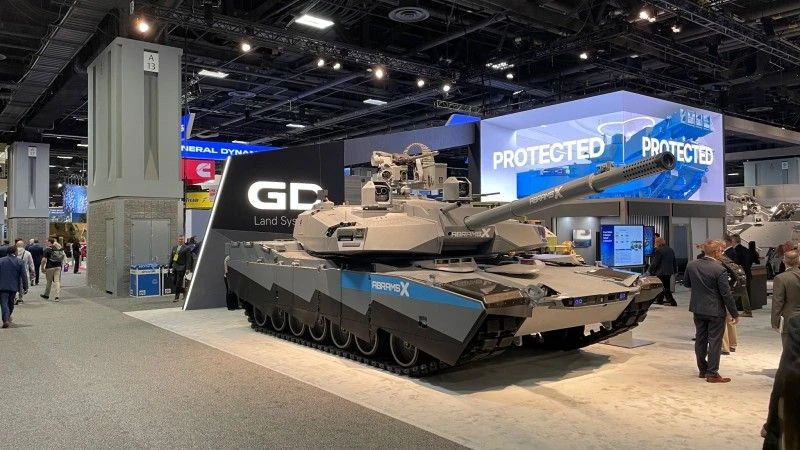
The AbramsX, developed by General Dynamics Land Systems, was initially presented in late 2022 as a technology demonstrator, showcasing the potential future direction of the US Army’s tank of choice. Designed as the successor of the currently in service Abrams variants, the tank shares the majority of the design traits of the M1 family. However, significant upgrades in crew protection and weight have been made. The crew, stationed in the hull, has been reduced to 3. The AbramsX also boasts a new unmanned turret, the main gun using an autoloader. This change enables for greater protection of the hull at the cost of thinner turret armour which enables a drastic reduction of the vehicle’s mass. This is a key consideration for the Abrams, the new vehicle will reportedly weight in at around 60 tons, 10 tons less than the current Abrams in service.
The design proposed by GDLS also contains a new engine unit. The company decided on a hybrid solution in the form of Cummins Advanced Combat Engine which will also reportedly save fuel. In addition, a SAPA Advance Combat Transmission is included. It is worth mentioning that the internal units of the M1E3/A3 design will be chosen through open tender, thus the complete shape of the MBT cannot be foreseen.
It is not only the US seeking improvements in the overall design of the next-gen MBT, as European nations also look to the future and manufacturers have presented several interesting designs.
EMBT-ADT 140
The newest EMBT by KNDS by is probably the most notable example of how the European defense industry perceives cooperation not only regarding manufacturing but also the end-user needs. The EMBT-ADT 140 presented at Eurosatory this year marks a change in thinking about the firepower of future tanks generation. The EMBT-EDT has been equipped with an unmanned turret system with the 140mm ASCALON (Autoloaded and SCALable Outperforming guN) L/48.
The EMBT-EDT is equipped with a variety of sensors including 6 radars informing the crew of airborne threats such as FPV drones but also 4 laser-warning sensors. The tank is also equipped with an active protection system (APS). In addition to its main armament, the EMBT is equipped with RCWS ARX remotely controlled weapon system with a 30mm autocannon and a machine gun while the turret itself is equipped with a 20mm coaxial autocannon. It grants the vehicle a huge variety of weaponry for combatting soft-armored and non-armored vehicles as well as dismounted personnel and unmanned aerial threats. EMBT-EDT is a proposal under the Main Ground Combat System, a joint Franco-German effort to build a next-gen MBT.
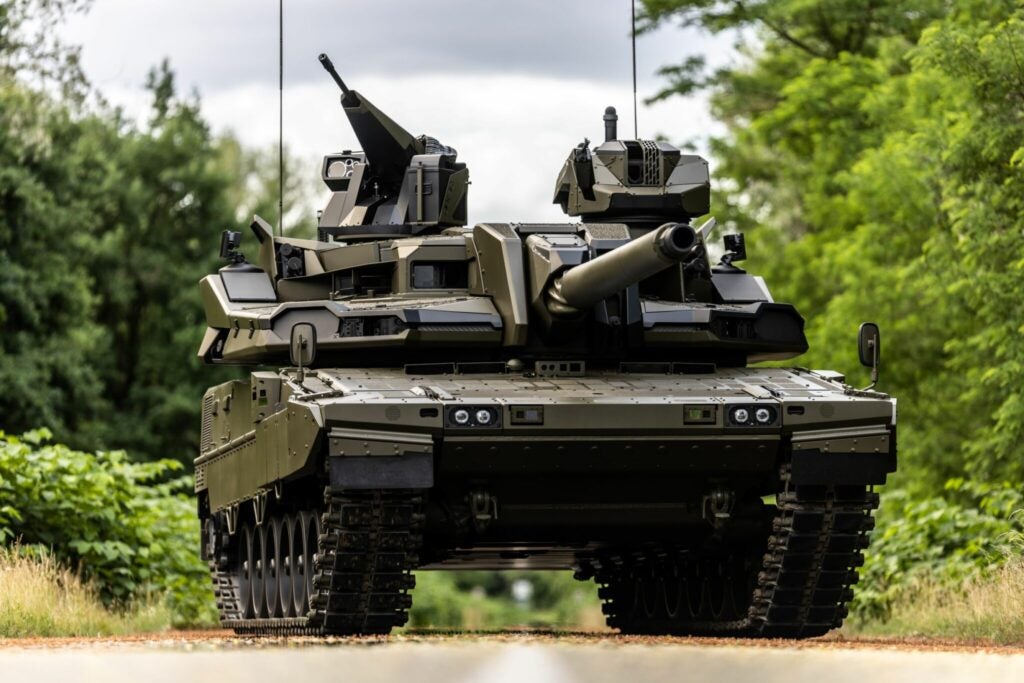
The EMBT-ADT 140 is a derivative of another technology demonstrator showcased by KNDS at Eurosatory in 2018, the EMBT. The presented vehicle is a hybrid of modified Leopard 2A7 chassis with a Leclerc MBT turret equipped with an autoloader and CN120-26 120mm gun. This, however, seems to be an already outdated concept with the introduction of the EMBT-ADT 140 mentioned above.
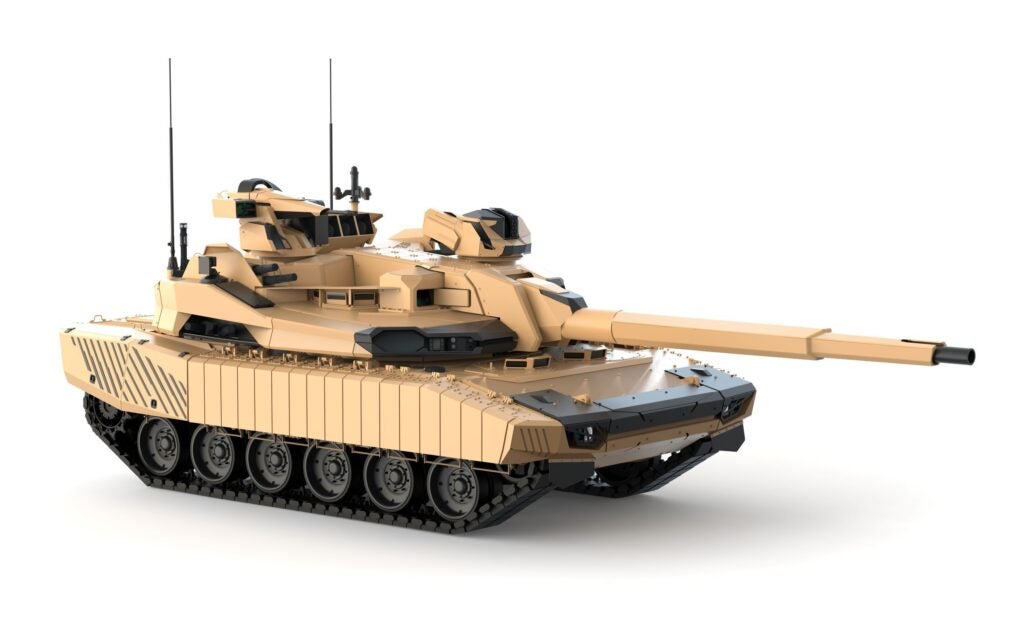
The solutions used in the EMBT ADT 140 have also influenced the proposed modification of Leclerc MBT which materializes in the form of the next-generation ‘Leclerc Evolution’ being equipped with a 120mm ASCALON gun fitted into a turret equipped with an autoloader and two crew members. The Leclerc Evolution also contains multiple sensors for passive and active defense which are managed by the tank’s commander assistant. The concept vehicle itself is also equipped with an RCWS ARX remotely controlled weapon system. In addition to that, the Leclerc Evolution is equipped with a three cell loitering munitions launcher.
KF-51 “Panther”
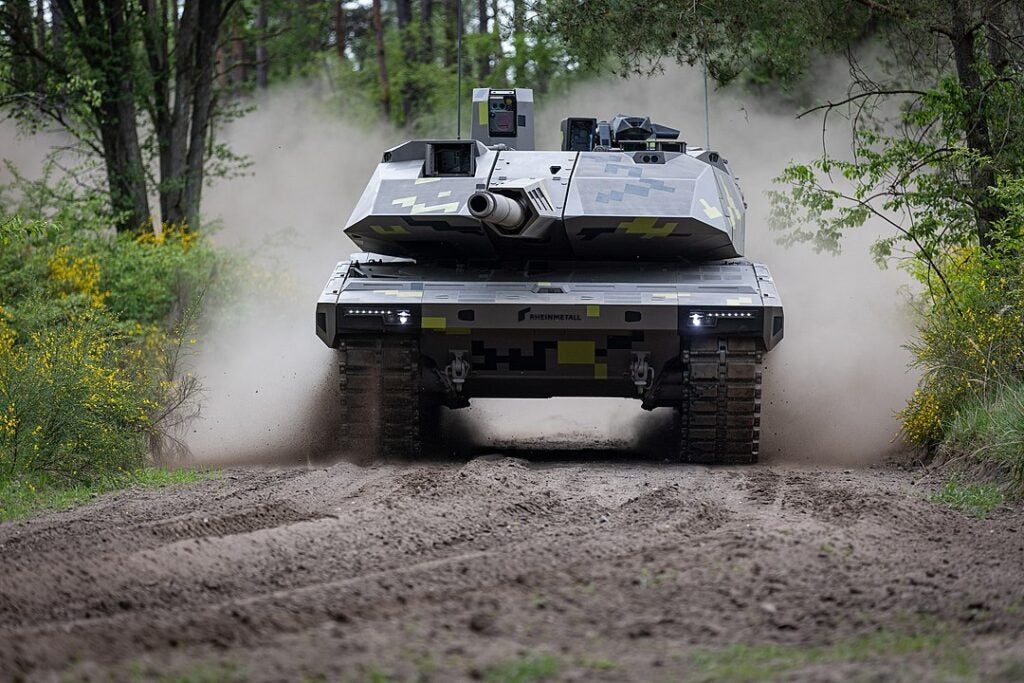
The most notable example of one of the previously unveiled designs is the KF-51 “Panther” offered by Krauss Maffei Wegmann (KMW). This design was first unveiled at Eurosatory 2022. A Leopard 2A4 chassis equipped with an autoloaded 130mm gun and crew turret of two. The KF-51 Panther is stated to have three layers of protection: passive, reactive, and active. The innermost layer consists of all-welded steel armor covered by passive armor modules. The second layer comprises sensor-based reactive armor, while the final layer comprises APS. The powerpack is possibly derived from Leopard 2A4 as well with an MTU MB 873 Ka-501 water-cooled V12 diesel engine producing 1,500 hp and Renk’s HSWL 354 four-speed automatic transmission.
During this year’s Eurosatory a new variant of the KF-51 MBT has been showcased – the KF51-U Concept Uncrewed Turret (CUT). The electrically powered turret houses the fire control system, parts of the C4I equipment, and other parts of the sensor system, including a metrological sensor. The SAS (Situational Awareness System) ensures superior situational awareness. Active hard-kill protection systems such as Rheinmetall’s Active Protection System (APS) or – as shown at Eurosatory – Iron Fist as well as soft-kill protection systems such as MUSS and the ROSY rapid obscurant system protect the crew and the platform from a wide range of enemy threats. The uncrewed turret is accessible from above via a maintenance hatch.
The KF-51U is equipped with a 51mm caliber 130mm Future Gun System. Ammunition is fed via the bustle-mounted autoloader from two magazines in the rear of the turret. The ammunition capacity consists of 25 cartridges. The commander’s Main Sensor Slaved Armament (MSSA) remote-controlled weapon station is equipped with a Rheinmetall RMG 7.62 machine gun.
Leopard 2A-RC 3.0
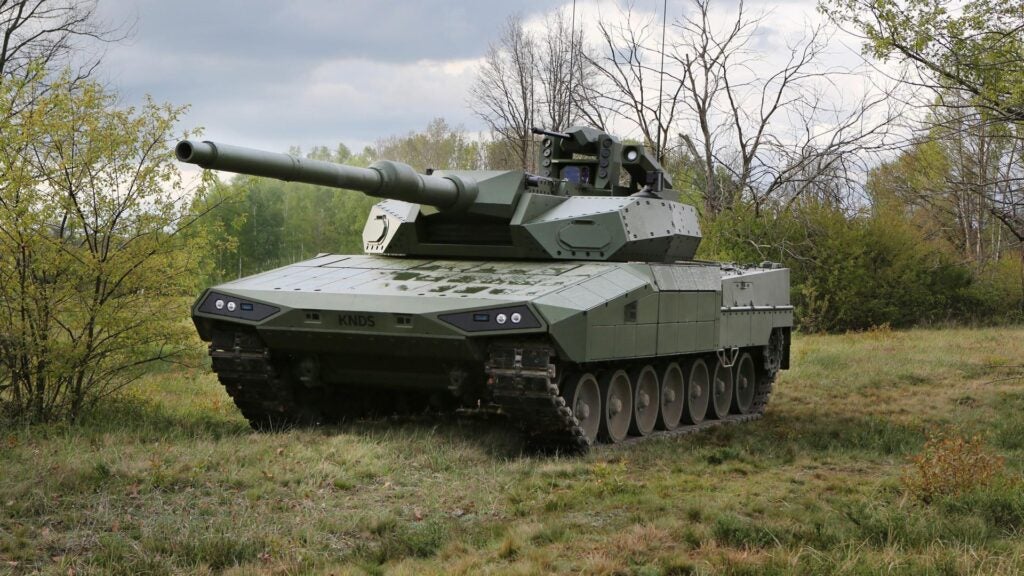
Last but not least is the latest Leopard 2A-RC 3.0 recently unveiled by KNDS. The Leopard 2A-RC, part of KNDS’s ambitious vision for the next generation of combat vehicles, showcases a range of cutting-edge features designed to enhance battlefield effectiveness. This demonstrator integrates advanced automation, state-of-the-art sensors, and modular armor systems, positioning it as a formidable contender in the future of armored warfare.
The vehicle’s firepower is augmented by a guided missile system with which targets beyond the line of sight can also be engaged while moving. The remote-controlled 30mm weapon system completes the threat-adapted weapon mix with its ability for deployment against closer-range ground targets and aerial threats.
One of the standout features of the Leopard 2A-RC is its remote control capability, allowing for greater operational flexibility and reduced risk to personnel. The tank is equipped with sophisticated AI-driven systems that enable autonomous operation in complex environments, significantly boosting its strategic value. Additionally, the Leopard 2A-RC emphasizes adaptability. Despite its groundbreaking innovations, the Leopard 2 A-RC 3.0 is fully backward compatible. Any Leopard 2 variant currently in service can be upgraded to the Leopard 2 A-RC 3.0 equipment status. The modular approach enables solutions that are oriented to the individual needs of the customer.
Compare and Contrast
First of all, the majority of the concepts move away from the classic hull-turret design for much greater protection of the crew that is now to be encapsulated in a thickly armored hull. Mass has become a great consideration for all those projects with none of them exceeding 70 tons. The key solution here is getting rid of the loader and installing an autoloader system which is faster than manual loading of the round into the breach. Some of the projects include the complete abandonment of personnel in the turret while some consider that the gunner and commander will stay at their current positions.
Besides the GDLS project, there are little to no changes in regard to the vehicles’ engine units and transmissions. The focus appears to be on modernization of currently existing power trains, with the next-gen MBT will simply becoming lighter than the current generation of MBTs, swapping tons of armor for an improved power to weight ratio.
Yet the elephant in the room is firepower. It seems that the designers responsible for MGCS expect a possible need to increase gun caliber from 120mm up to 140mm. The adoption of a larger caliber would mean a significant change in perception of the specifics of armored warfare in our era, as 120mm smoothbore canons have dominated the battlefield since the Gulf War.
Another feature worth mentioning is the wide adoption of active protection systems against loitering munitions and drones which are a paramount concern at the moment. While drones have proven themselves an asymmetric threat to MBTs in Ukraine this was driven as a response to a wide lack of sophisticated anti-tank weaponry and they should not yet be perceived as an asset worth more than conventional ATGM. Despite being commercially attractive, the anti-drone feature of some next-gen MBTs is nothing more than an option. Meanwhile, the incorporation of loitering munitions and ATGMs seems to bring back nostalgia for Soviet solutions presented in the 1970s and 1980s, when T-80s and T-72s were equipped with gun-launched anti-tank missiles.
Lastly – the introduction of AI architecture to tank systems is another fascinating development. While it is currently unclear how AI integration will be utilised such solutions could provide greater situational awareness to the crew and automate some tasks. Discovering irregularities in the surroundings, finding patterns, tracking, and fast data analyzing can prove the life-saving assets on a battlefield filled with sensors, and drones and under constant observation. However artificial intelligence is still in its early stages and its usefulness may initially be limited.
In conclusion – the new MBTs will be lighter, faster, and more agile than their predecessors. They may utilise more technological novelties and experiment with crew layouts. They’re likely to be better armed with more secondary weapon systems capable of engaging varried threats, autoloaders are set to become standard and main gun calibers may increase. Tanks are here to stay despite recent fears expressed about the threat of drones and other anti-tank systems. While the vehicles displayed at Eurosatory are currently largely concepts they provide intriguing hints at the future development of main battle tanks.
